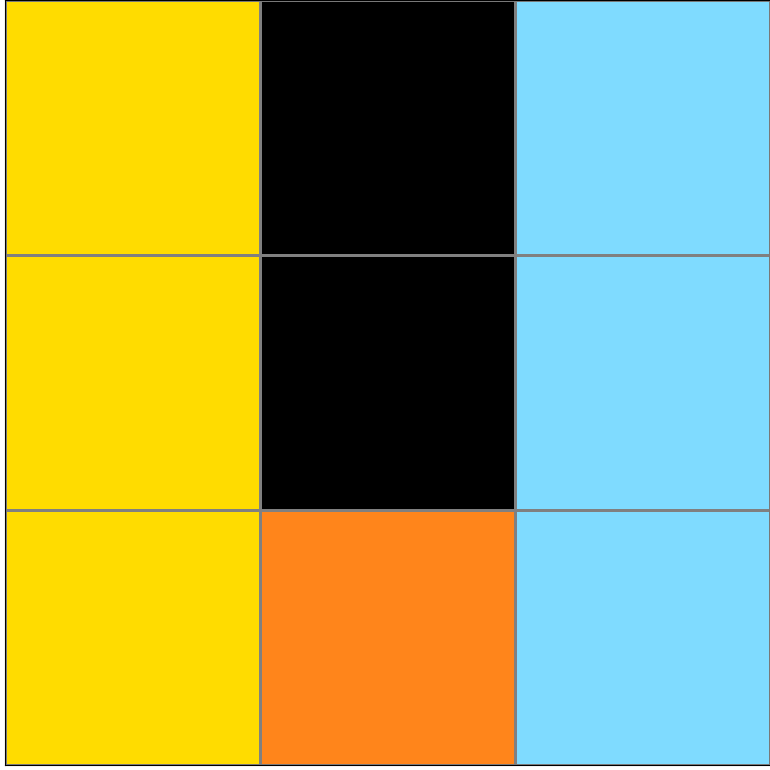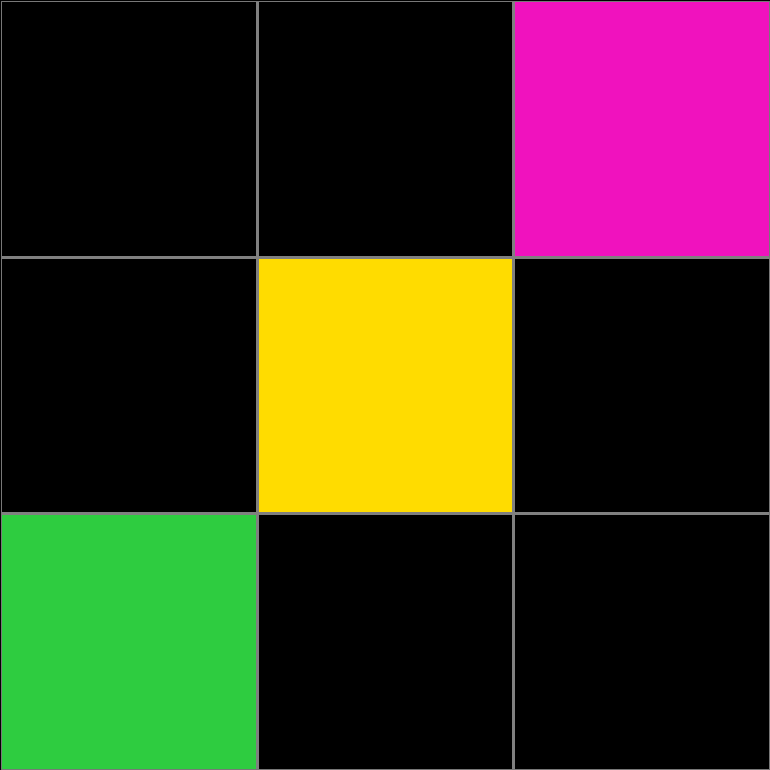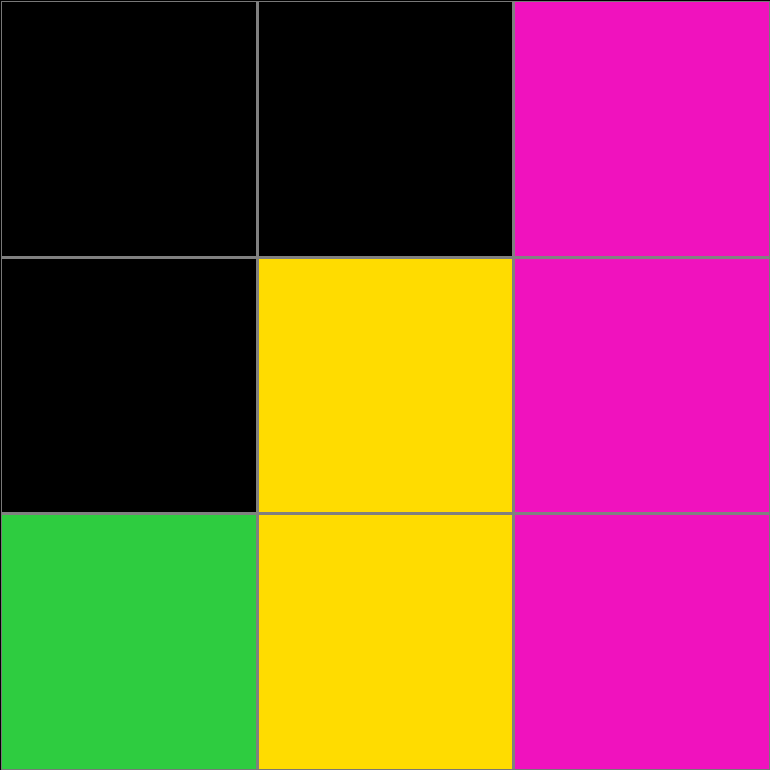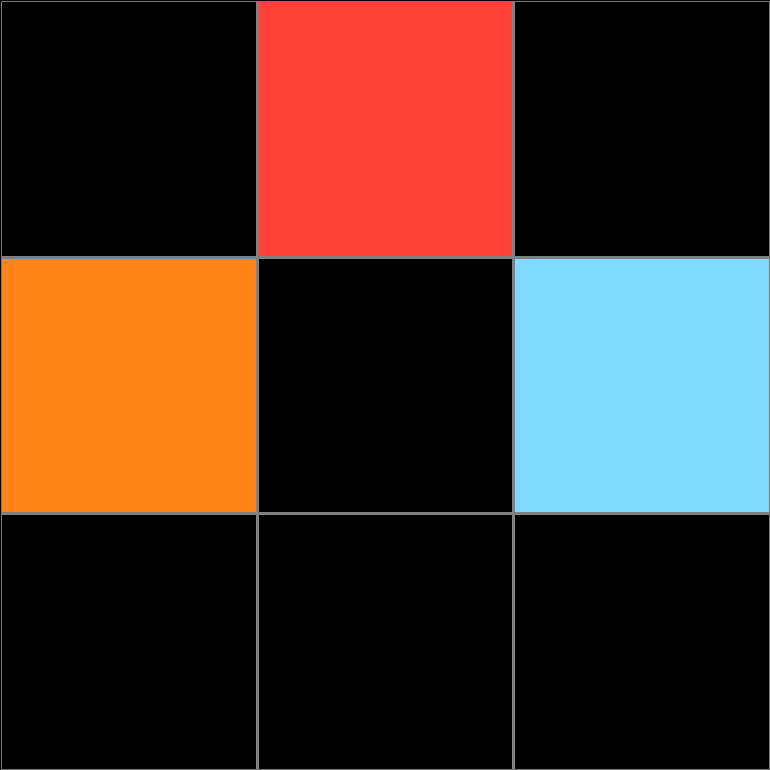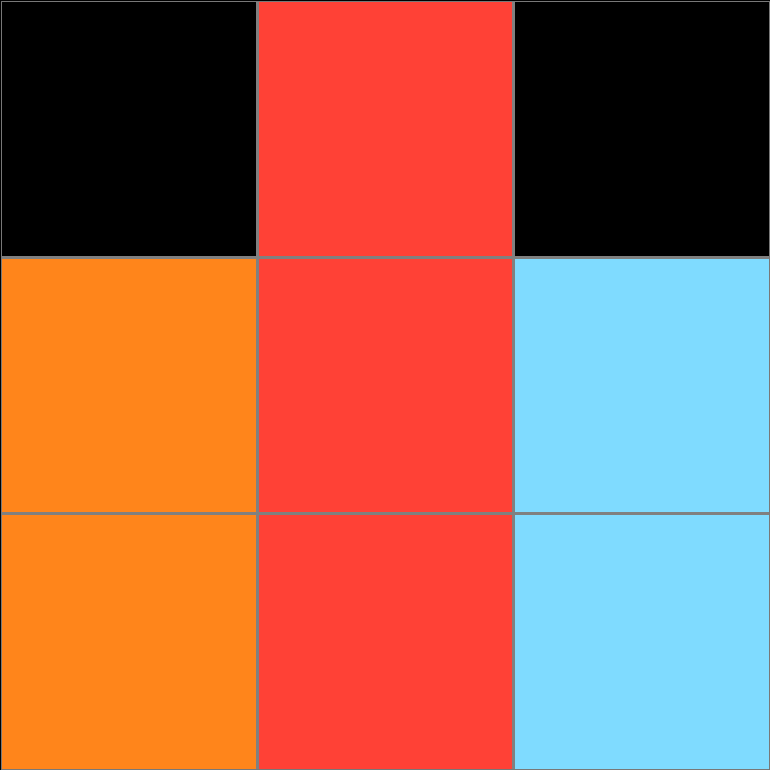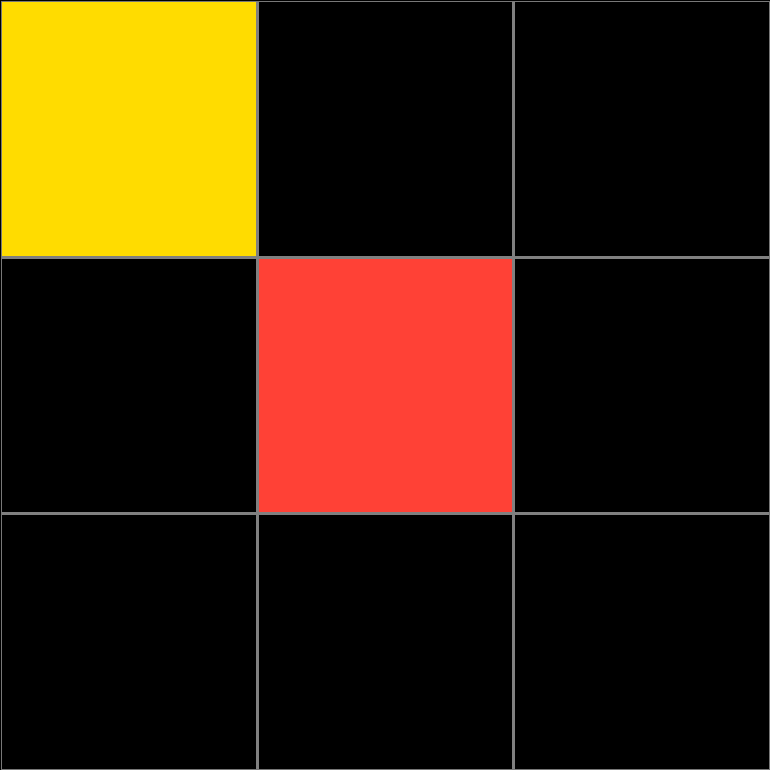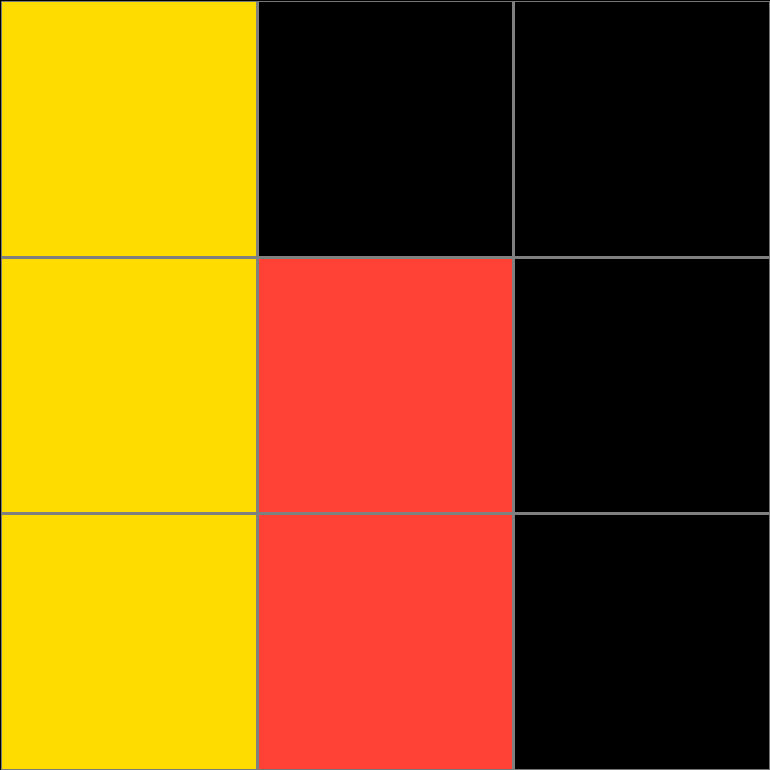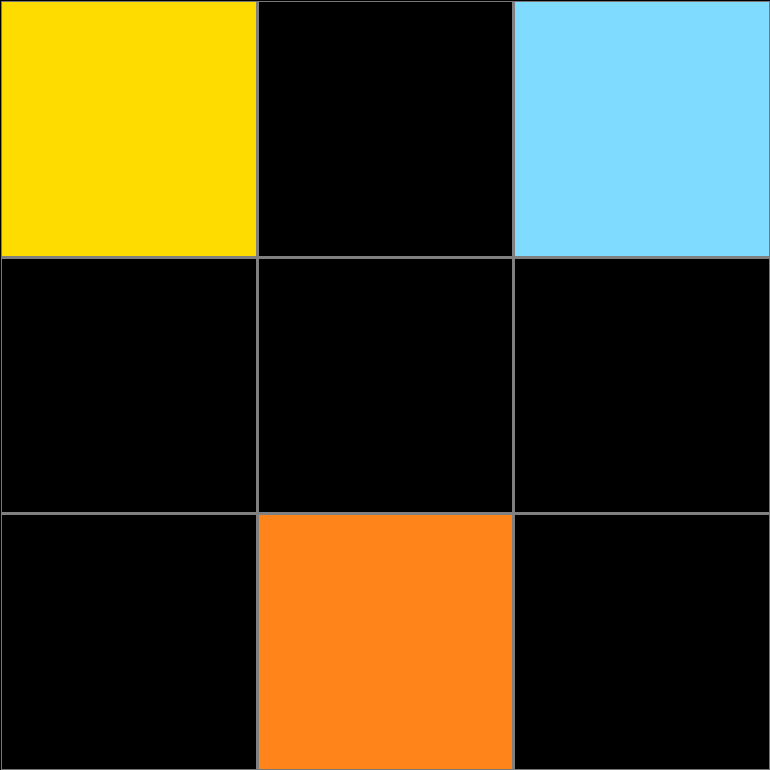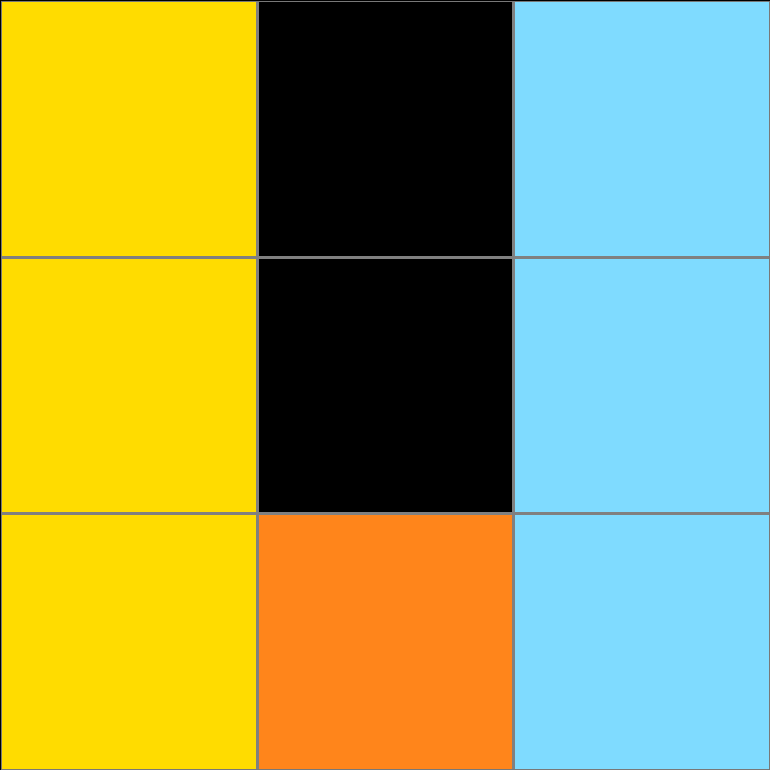Participant 1
Initial description: It seemed like the logical choice given the position of the test input squares
Final description: In the example output 1 it shows if this square is in the top right then the whole line below it is filled. It also shows an example 3 that if it is in the top left that is also filled all the way below it. For the third part the orange square in the example one it shows the green square being at the bottom and being a single fill. Since I had already tried to fill the middle all the way as shown in the example input 2 and that did not work I figured out that the rule was if it is in the bottom it is a single fill in the square that it is already in.
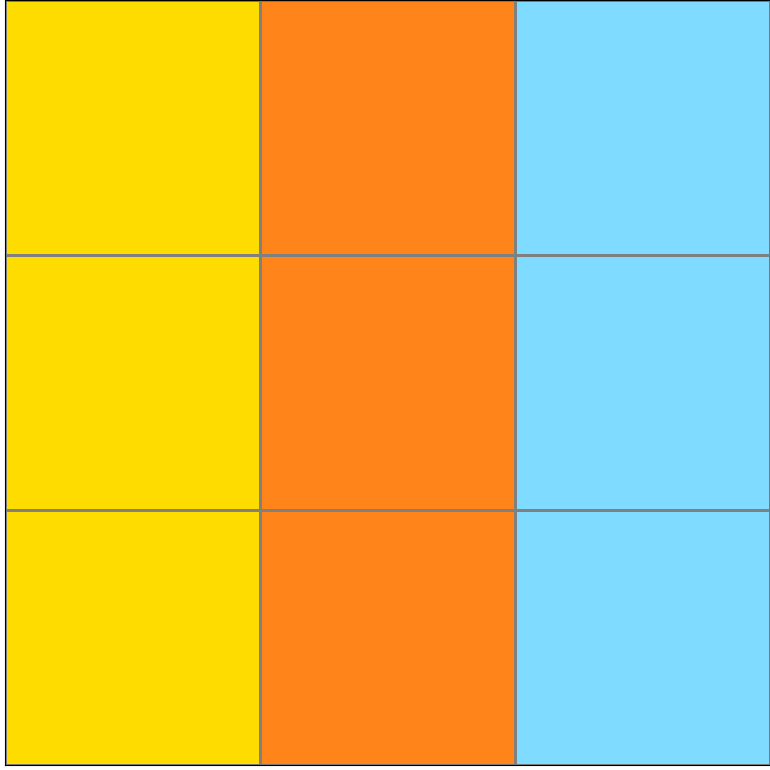
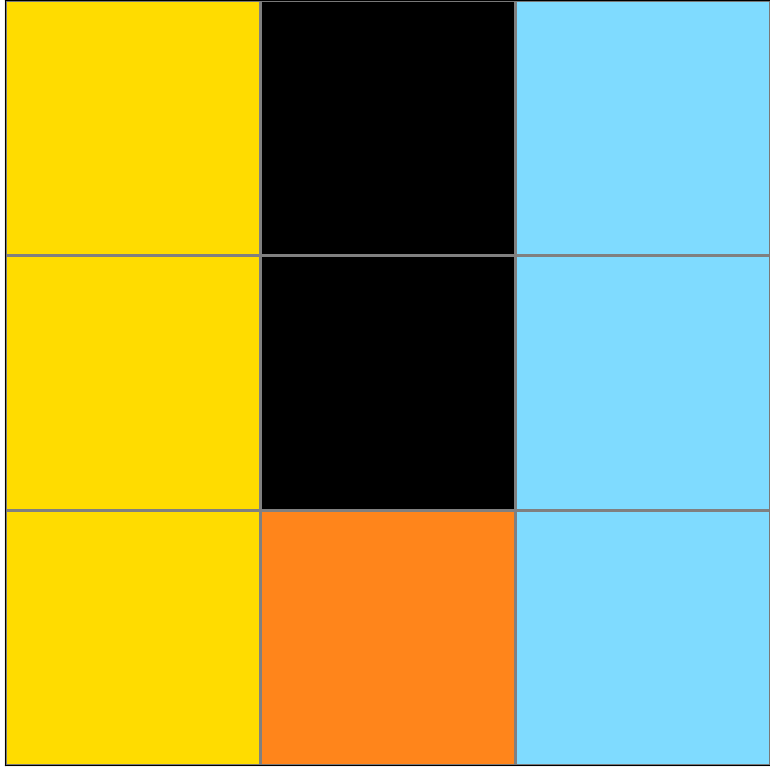
Participant 2
Initial description: This figure basically follow the rule of what I like to call the squares. For example since both the yellow square and the light blue squares start on the top, the must fill them all the way to the bottom according to the example inputs. However the position is for example where the orange square is located, then only that one should be filled. If it was in the Middle, it should only fill the squares at the bottom.
Final description: This figure basically follow the rule of what I like to call the squares. For example since both the yellow square and the light blue squares start on the top, the must fill them all the way to the bottom according to the example inputs. However the position is for example where the orange square is located, then only that one should be filled. If it was in the Middle, it should only fill the squares at the bottom.
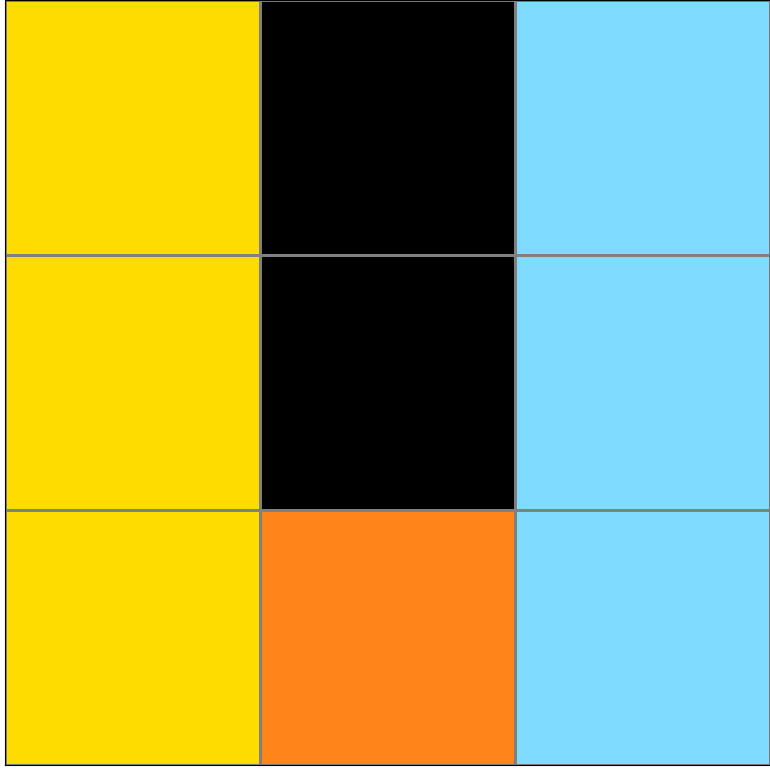
Participant 3
Initial description: The grid size stays the same, but any box that is above the bottom row will have its same color flowing downwards vertically.
Final description: The grid size stays the same, but any box that is above the bottom row will have its same color flowing downwards vertically.
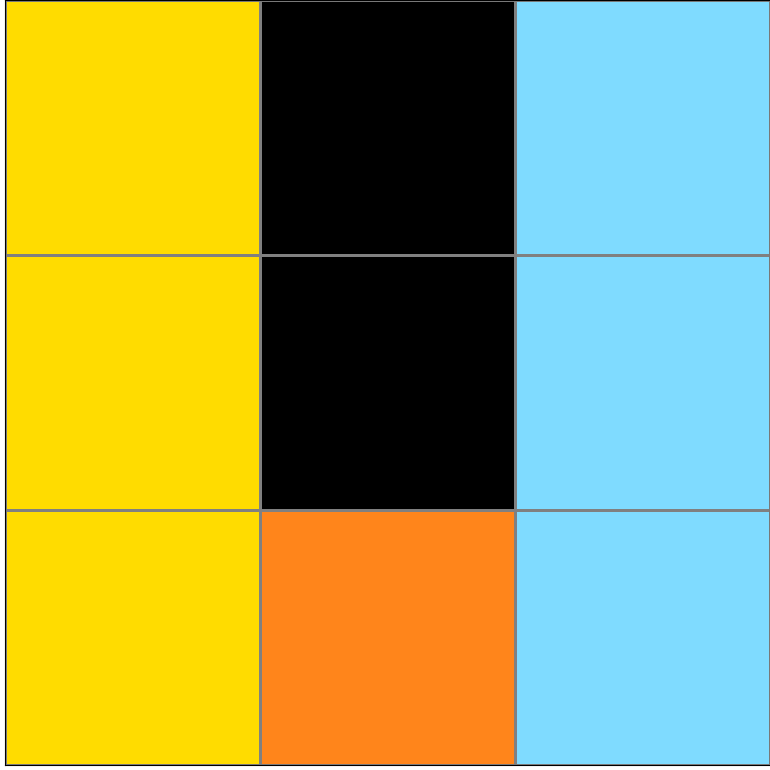
Participant 4
Initial description: If top boxes were colored in then color in the two boxes below with the corresponding color.
Final description: Color in black boxes underneath with corresponding color
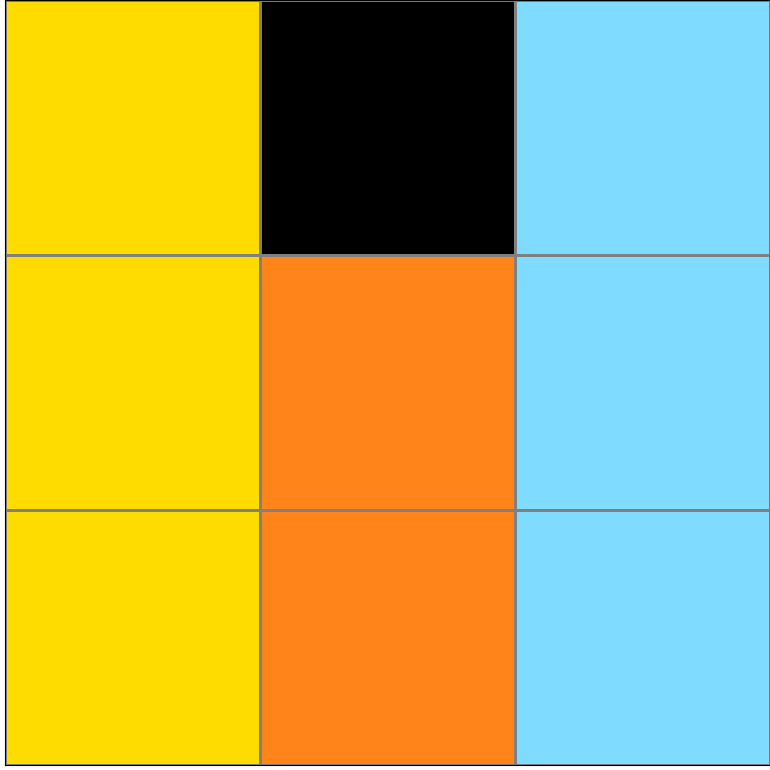
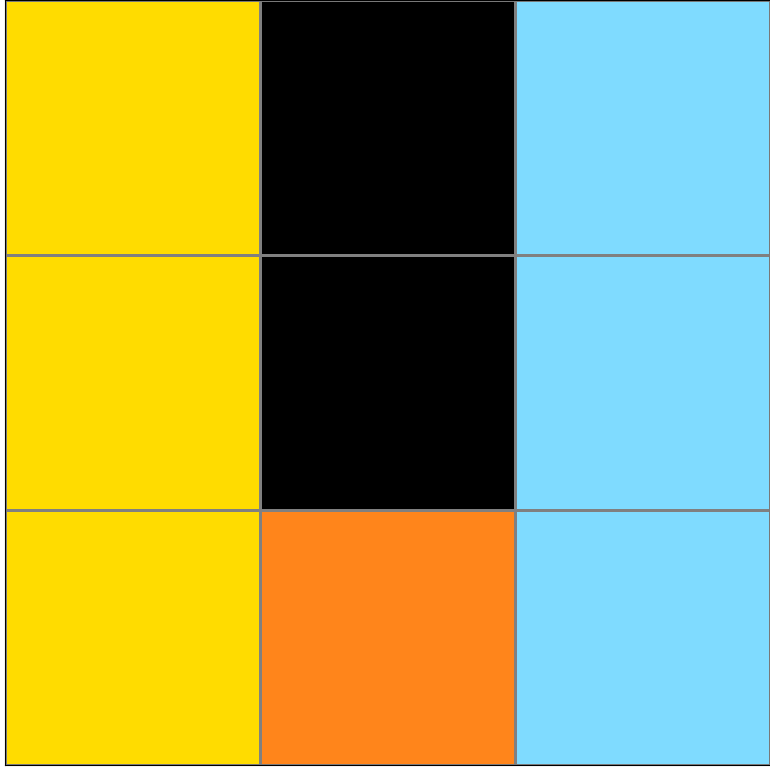
Participant 5
Initial description: it was insert the same color vertically across the columns
Final description: it was insert the same color vertically across the columns
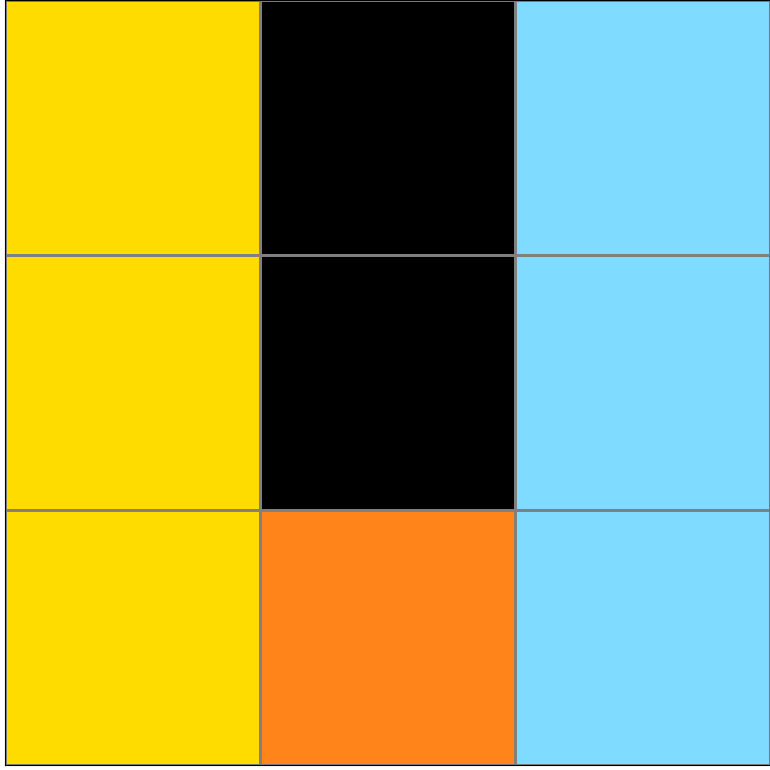
Participant 6
Initial description: I thought the rule was to extend the block furthest to the right down all of the way.
Final description: I thought the rule was to extend the colored blocks the same was as shown in the example outputs so that yellow gets three blocks, orange two blocks, and blue two blocks.
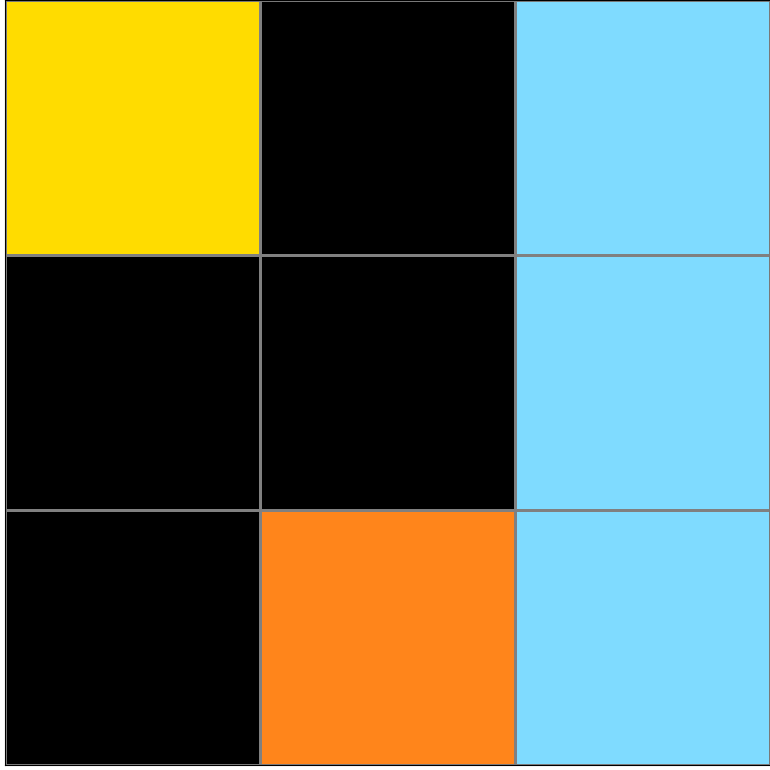
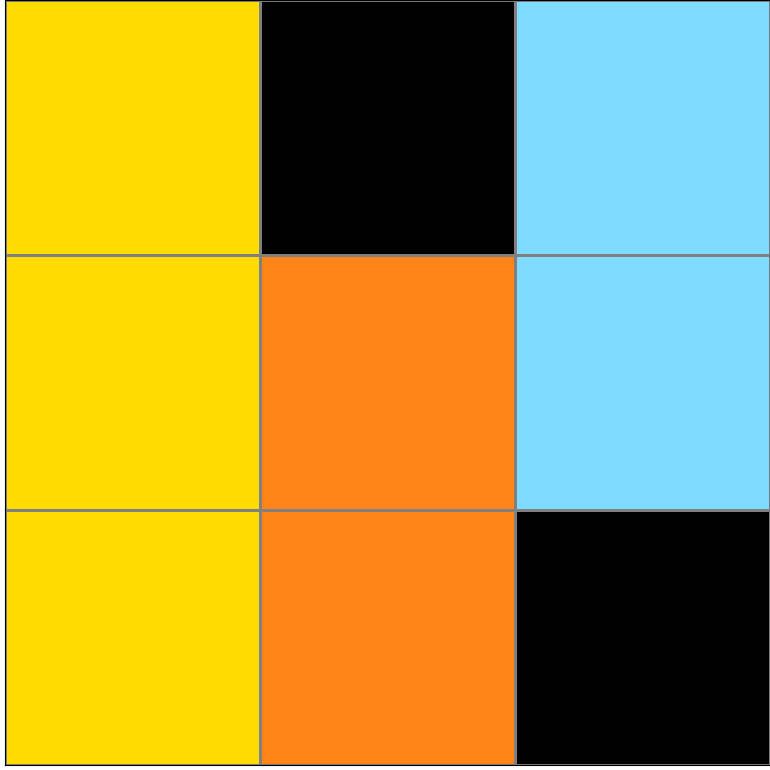
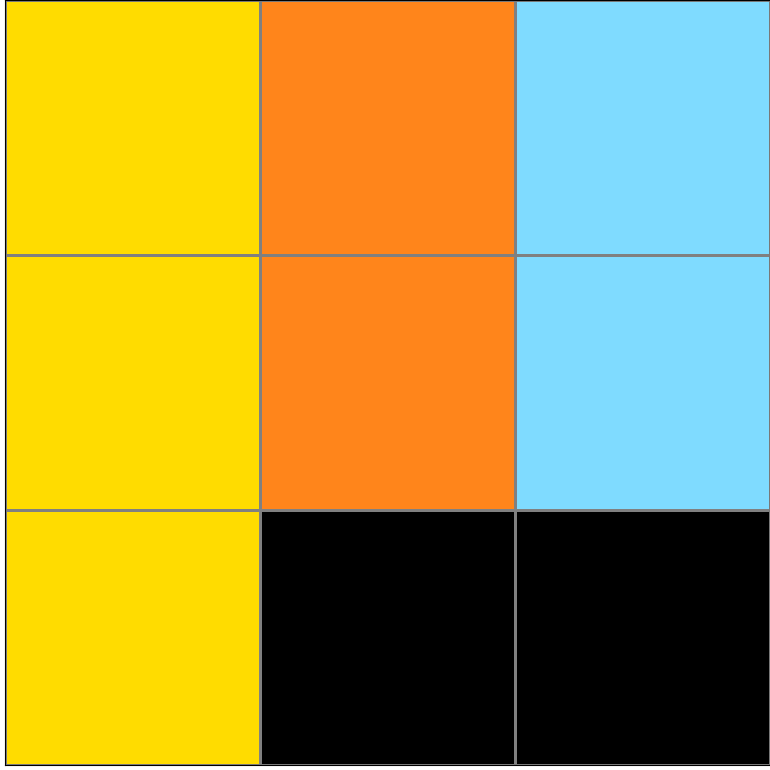
Participant 7
Initial description: You just have to fill up the bar with the same color in the column, up to the highest square on the grid.
Final description: You just have to fill up the bar with the same color in the column, up to the highest square on the grid.
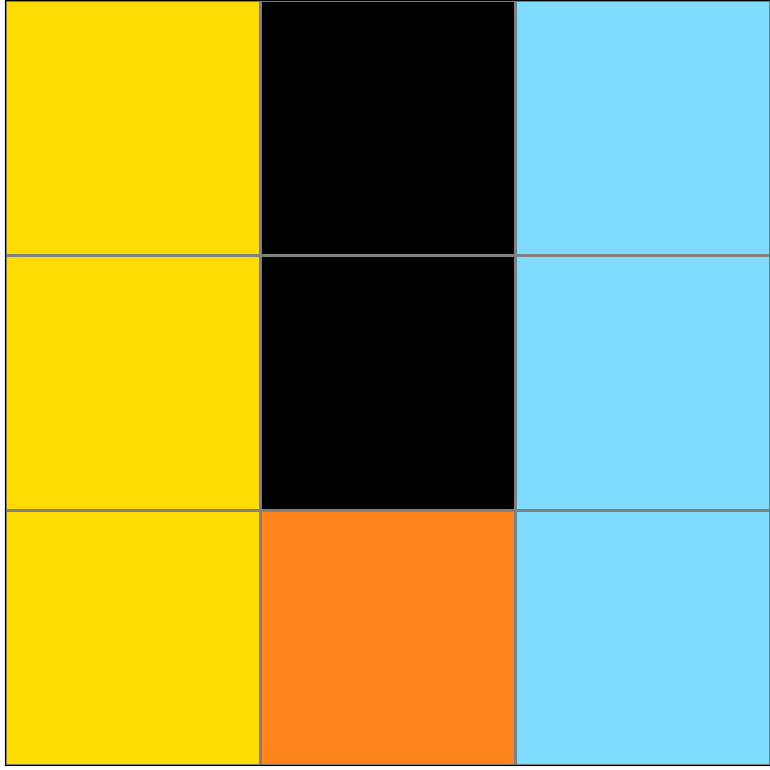
Participant 8
Initial description: just extended colors till the bottom grids.
Final description: just extended colors till the bottom grids.
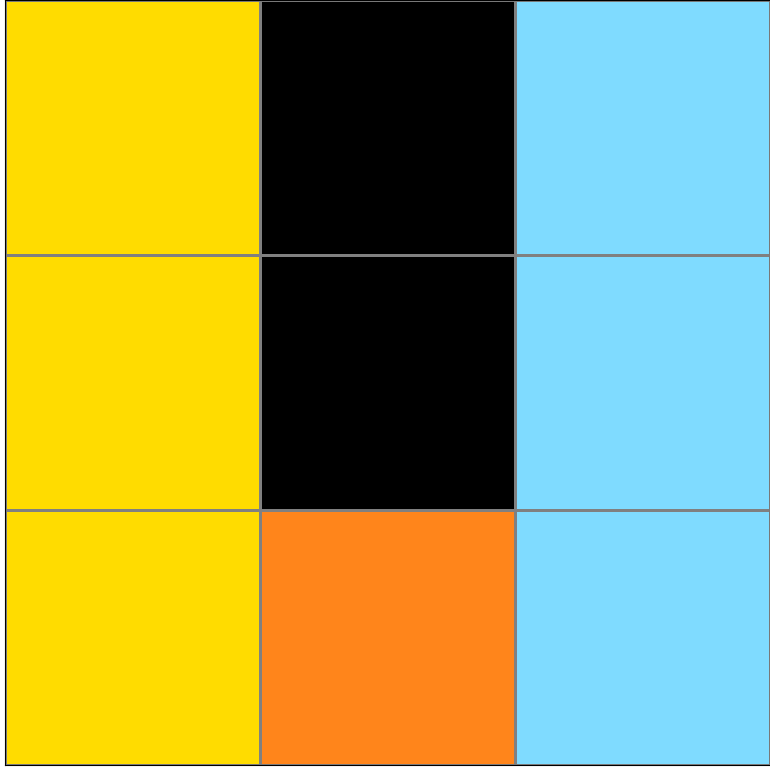
Participant 9
Initial description: If the color isn't already at the bottom of the grid, extend from whatever level the color is at to the bottom.
Final description: If the color isn't already at the bottom of the grid, extend from whatever level the color is at to the bottom.
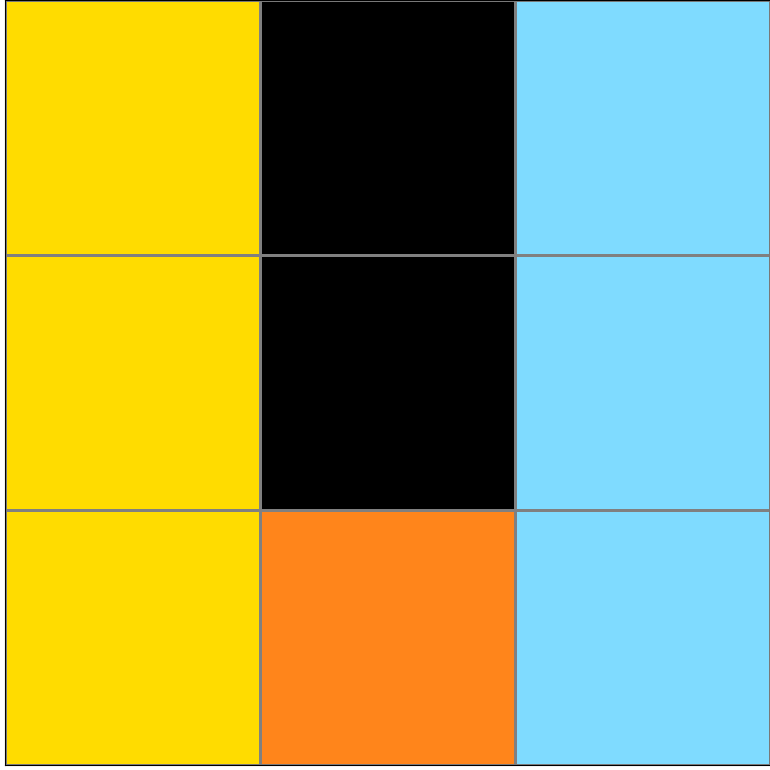
Participant 10
Initial description: The blocks are filled from the top to bottom from starting location.
Final description: The blocks are filled from the top to bottom from starting location.
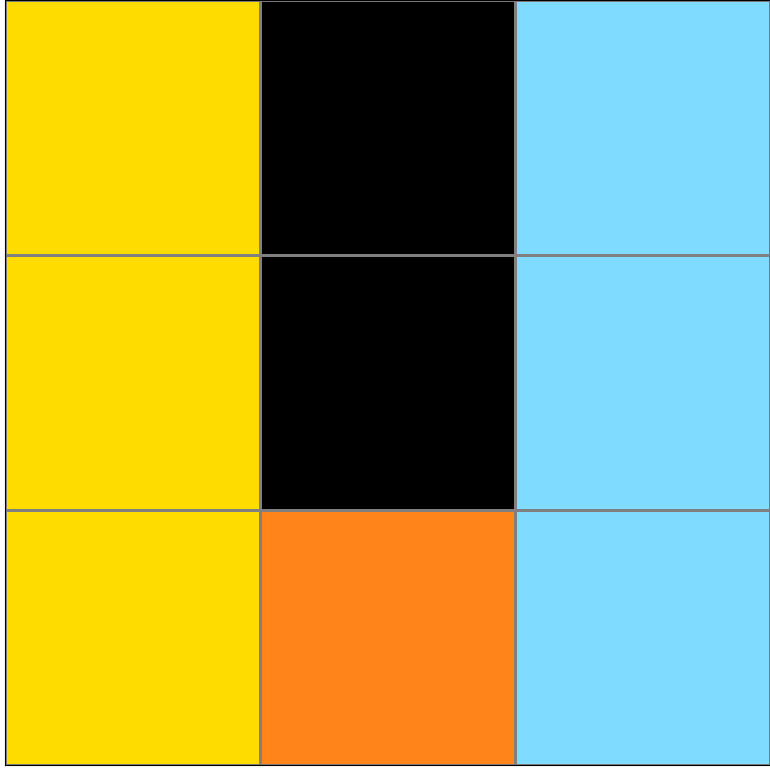
Participant 11
Initial description: The color squares that are the highest should be extended down to their lowest points. The squares that are low stay there and shouldn't be extended.
Final description: The color squares that are the highest should be extended down to their lowest points. The squares that are low stay there and shouldn't be extended.
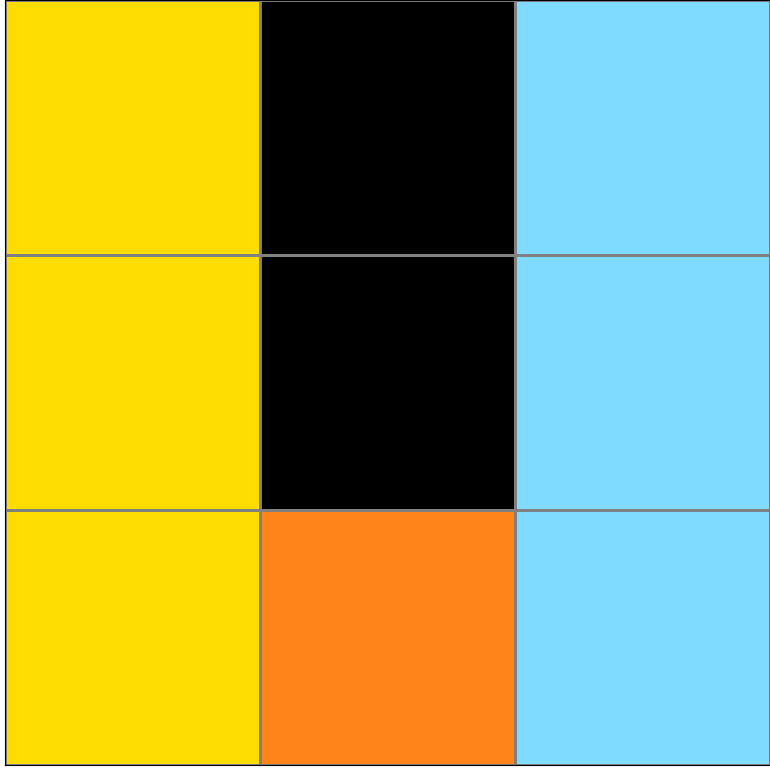
Participant 12
Initial description: Add the colors horizontally based on how high the input block is.
Final description: Add the colors horizontally based on how high the input block is.
